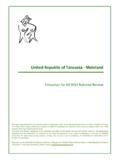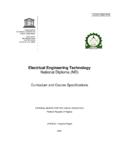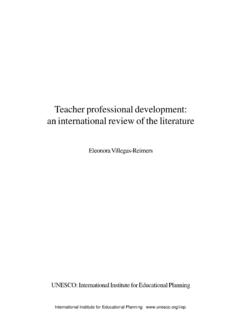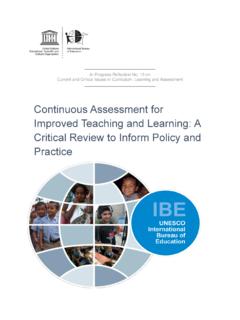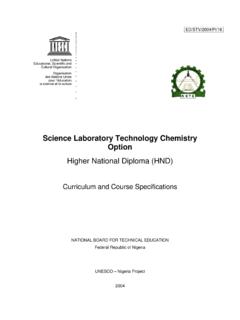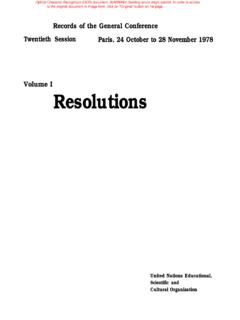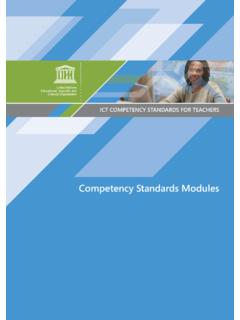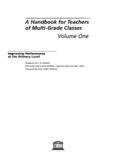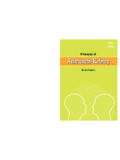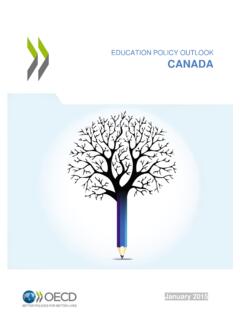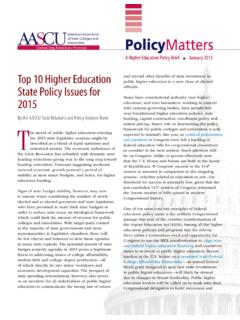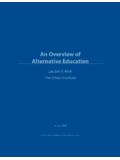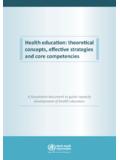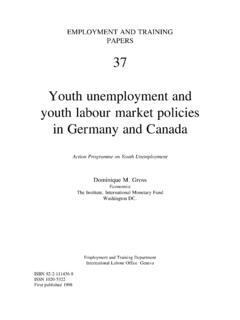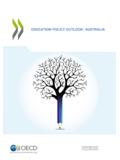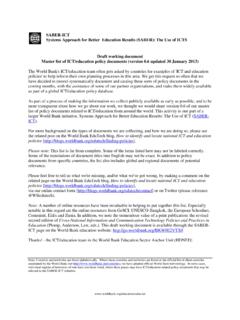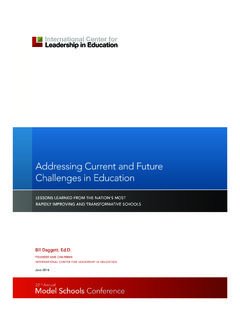Transcription of ENHANCING LEARNING OF CHILDREN FROM DIVERSE …
1 United NationsEducational, Scienti c andCultural OrganizationENHANCING LEARNING OF CHILDREN FROM DIVERSE LANGUAGE BACKGROUNDS:MOTHER TONGUE-BASED BILINGUAL OR MULTILINGUAL education IN THE EARLY YEARSANALYTICAL REVIEW COMMISSIONED BY THE UNESCO education SECTOR ENHANCING LEARNING OF CHILDREN FROM DIVERSE LANGUAGE BACKGROUNDS:MOTHER TONGUE-BASED BILINGUAL OR MULTILINGUAL education IN THE EARLY YEARSJESSICA BALLUNIVERSITY OF VICTORIAThis paper was commissioned by the UNESCO education Sector. The views and opinions expressed in this paper are those of the author(s) and should not be attributed to UNESCO. The papers can be cited with the following reference: Paper commissioned for UNESCO For further information, please contact y.
2 And in 2011by the United Nations Educational,Scientifi c and Cultural Organization7, place de Fontenoy, 75352 PARIS 07 SPComposed and printed in the workshops of UNESCO UNESCO 2011 Printed in FranceCover photo: Luz s daycare centre, Bogota, Colombia, 2006 Photographer: Alejandra Vega Jaramillo UNESCO2010/ED/BAS/ECCE/PI/1ED-2011/WS/21 TABLE OF CONTENTSE xecutive Summary 5 Introduction 8 International Normative Frameworks 10 Concepts and defi nitions 12 Literature review approach 15 Literature review 15 Theories and approaches 15Bi / Multilingual programme models 21 Particularities of mother tongue-based bi / multilingual education in the early years 37 Challenges and obstacles 44 Good practices and lessons learned 46 Recommendations for UNESCO policy guidelines
3 50 Conclusion 57 Glossary 59 References 67 Notes 865 EXECUTIVE SUMMARYTh is literature review discusses mother tongue-based bilingual or multilingual education for CHILDREN starting in early childhood. Th e report: (1) informs policy -makers of existing research and practices in mother-tongue instruction in early childhood and early primary school years; and (2) raises awareness of the value of maintaining the world s languages and cultures by promoting and resourcing mother tongue-based education for young is analysis of current literature is framed within UNESCO s mandate and strong commitment to quality education for all and to cultural and linguistic diversity in education (UNESCO, 2003a).
4 Th is discussion is especially timely, given the slow and uneven progress (UNESCO, 2000) in meeting international targets for universal education articulated in the education for All Goals 1 (ECCE), Goal 2 (Primary education ), and Goal 6 (Quality of education ) (World Declaration on education for All, 1990).1 Impetus for the current report is provided by the UNESCO (2008a) Global Monitoring Report on education for All: Will we make it? Th e 2008 GMR report calls for unwavering political will to ensure that education from early childhood onwards is a priority of national governments, civil society and the private sector in order to ensure educational inclusion for the 72 million CHILDREN out of school and to reduce the numbers of young learners who leave school without acquiring essential skills and knowledge.
5 Th e report calls for increased investments in the provision of pre-primary education for CHILDREN aged 3 and above, and for policy measures to provide care and education to CHILDREN below age 3. UNESCO (2007a) emphasizes the role of early childhood care and development in laying the foundation for LEARNING and setting the stage for successful engagement in formal education . UNESCO has encouraged mother tongue instruction in early childhood and primary education since 1953 (UNESCO, 1953). Yet, monolingualism in offi cial or dominant languages is still the norm around the world (Arnold, Bartlett, Gowani, & Merali, 2006; Wolff & Ekkehard, 2000).
6 In its report, Strong Foundations: Early Childhood Care and education , UNESCO (2007a) points out the overlooked advantages of multilingual education in the early years. When CHILDREN are off ered opportunities to learn in their mother tongue, they are more likely to enrol and succeed in school (Kosonen, 2005) and their parents are more likely to communicate with teachers and participate in their CHILDREN s LEARNING (Benson, 2002). Mother tongue based education especially benefi ts disadvantaged groups, including CHILDREN from rural communities (Hovens, 2002), and girls, who tend to have less exposure to an offi cial language and tend to stay in school longer, achieve better, and repeat grades less oft en when they are taught in their mother tongue (UNESCO Bangkok, 2005).
7 Increasingly, cultural groups are realizing the need to ensure the transmission of their linguistic heritage to the youngest members of their communities. A compendium of examples produced by UNESCO (2008b) attests to the resurgence of international interest in promoting mother tongue-based education , and to the wide variety of models, tools, and resources now being developed and tested to promote LEARNING programmes in the mother tongue. However, most examples focus on the primary school level. Few empirical studies or well-documented programmes promote the family s role as a child s fi rst teacher in LEARNING their fi rst, and oft en more than one primary language, or the role of early childhood educators in supporting mother tongue development or bi/multilingual LEARNING in 6 ENHANCING LEARNING of CHILDREN from DIVERSE language backgrounds: Mother tongue-based bilingual or multilingual education in the early yearsprogrammes that serve very young, linguistically DIVERSE populations.
8 Many CHILDREN speak a home language that diff ers from the language of instruction in education programmes. Research confi rms that CHILDREN learn best in their mother tongue as a prelude to and complement of bilingual and multilingual education . Whether CHILDREN successfully retain their mother tongue while acquiring additional languages depends on several interacting factors. Studies show that six to eight years of education in a language are necessary to develop the level of literacy and verbal profi ciency required for academic achievement in secondary school.
9 To retain their mother tongue, CHILDREN whose fi rst language is not the medium of instruction must have: (1) continued interaction with their family and community in their fi rst language on increasingly complex topics that go beyond household matters; (2) ongoing formal instruction in their fi rst language to develop reading and writing skills; and (3) exposure to positive parental attitudes to maintaining the mother tongue, both as a marker of cultural identity and for certain instrumental purposes ( , success in the local economy or global trade). In addition, research increasingly shows that CHILDREN s ability to learn a second or additional languages ( , a lingua franca and an international language) does not suff er when their mother tongue is the primary language of instruction throughout primary school.
10 Fluency and literacy in the mother tongue lay a cognitive and linguistic foundation for LEARNING additional languages. When CHILDREN receive formal instruction in their fi rst language throughout primary school and then gradually transition to academic LEARNING in the second language, they learn the second language quickly. If they continue to have opportunities to develop their fi rst language skills in secondary school, they emerge as fully bilingual (or multilingual) learners. If, however, CHILDREN are forced to switch abruptly or transition too soon from LEARNING in their mother tongue to schooling in a second language, their fi rst language acquisition may be attenuated or even lost.
